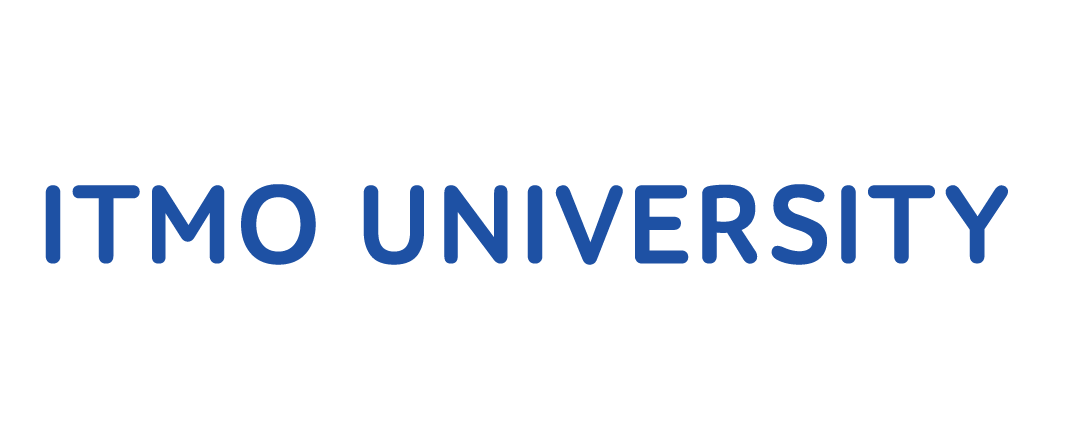Menu
Publications
2025
2024
2023
2022
2021
2020
2019
2018
2017
2016
2015
2014
2013
2012
2011
2010
2009
2008
2007
2006
2005
2004
2003
2002
2001
Editor-in-Chief

Nikiforov
Vladimir O.
D.Sc., Prof.
Partners
doi: 10.17586/2226-1494-2024-24-6-1035-1043
Specification language for automatа-based objects cooperation
Read the full article
Article in English
For citation:
Abstract
For citation:
Novikov F.A., Afanasieva I.V., Fedorchenko L.N., Kharisova T.A. Specification language for automatаbased objects cooperation. Scientific and Technical Journal of Information Technologies, Mechanics and Optics, 2024, vol. 24, no. 6, pp. 1035–1043. doi: 10.17586/2226-1494-2024-24-6-1035-1043
Abstract
Automata-based programming is a programming paradigm that has been successfully used in the development of reactive systems, distributed control systems, and various mission-critical applications where the ability to verify the compliance of a real system with its model given in the form of specifications is critical. The traditional testing of such systems can be difficult; thus, more advanced verification tools are required to increase confidence in the reliability of real systems. The previously proposed language for the specification of the Cooperative Interaction of Automata-based Objects (CIAO) was successfully used to develop several different reactive systems as a result of which a number of shortcomings were identified and eliminated in the new version of CIAO v.3. This new version of the language was developed for the automatic verification of automata-based programs according to the formal specifications of a certain class of real-time systems. Three innovations distinguish CIAO v.3 from previous versions. First, an explicit distinction between automata classes and automaton objects as instances of these classes. Second, we specify the binding of automaton objects through interfaces using a connection scheme. Third, we describe the semantics of the behavior of a system of interacting automaton objects using a semantic graph. This paper presents the main concepts of the new language version including the abstract syntax, operational semantics, and metamodel. The third version of the CIAO language naturally includes almost all the advantages of object-oriented programming into the paradigm of automata programming. The connection of automaton objects through the corresponding interfaces is arbitrarily reflected by the connection scheme. A semantic graph describing the semantics of the behavior of the automata-based program is used to implement automatic verification with respect to formal specifications.
Keywords: behavior model, automata-based programming, state transition graph, UML, state machine diagram, class diagram,
concurrent behavior, software architecture, reactive system
References
References
- Shalyto A.A. Software implementation of the control automata. Sudostroitel’naja promyshlennost’. Serija «Avtomatika i telemehanika», 1991, vol. 13, pp. 41–42. (in Russian)
- Harel D. Statecharts: a visual formalism for complex systems. Science of Computer Programming, 1987, vol. 8, no. 3, pp. 231–274. https://doi.org/10.1016/0167-6423(87)90035-9
- Harel D., Pnueli A. On the development of reactive systems. Logics and Models of Concurrent Systems. Berlin, Heidelberg, Springer, 1985, pp. 477–498. https://doi.org/10.1007/978-3-642-82453-1_17
- Harel D., Feldman Y.A. Algorithmics: The Spirit of Computing. London, Pearson Education, 2004, 513 p. https://doi.org/10.1007/978-3-642-27266-0
- Shalyto A.A. Switch-Technology. Algorithmization and Programming of the Logical Control Problems. St. Petersburg, Nauka Publ., 1998, 617 p. (in Russian)
- Polikarpova N.I., Shalyto A.A. Automata-Based Programming. St. Petersburg, Piter Publ., 2011, 176 p. (in Russian)
- Shalyto A. Automata-based programming paradigm. Scientific and Technical Journal of Information Technologies, Mechanics and Optics, 2008, vol. 53, pp. 3–23. (in Russian)
- Novikov F.A., Afanasieva I.V. Cooperative interaction of automata objects. Information and Control Systems, 2016, no. 6, pp. 50–64. (in Russian). https://doi.org/10.15217/issn1684-8853.2016.6.50
- Afanasieva I.V. Data acquisition and control system for high-performance large-area CCD systems. Astrophysical Bulletin, 2015, vol. 70, no. 2, pp. 232–237. https://doi.org/10.1134/S1990341315020108
- Levonevskiy D., Novikov F., Fedorchenko L., Afanasieva I. Verification of internet protocol properties using cooperating automaton objects. Proc. of the 12th International Conference on Security of Information and Networks (SIN'19),2019, pp. 1–4. https://doi.org/10.1145/3357613.3357639
- Afanasieva I., Novikov F., Fedorchenko L. Methodology for development of event-driven software systems using CIAO specification language. SPIIRAS Proceedings, 2020, no. 19, no. 3, pp. 481–514. (in Russian). https://doi.org/10.15622/sp.2020.19.3.1
- Novikov F., Fedorchenko L., Vorobiev V., Fatkieva R., Levonevskiy D. Attribute-based approach of defining the secure behavior of automata objects. Proc. of the 10th International Conference on Security of Information and Networks (SIN'17), 2017, pp. 67–72. https://doi.org/10.1145/3136825.3136887
- Novikov F.A., Ivanov D.Iu. UML Modeling. Theory, Practice, and Video Course. St. Petersburg, Professional’naja Literature Publ., 2010, 649 p. (in Russian).
- Afanasieva I.V., Novikov F.A., Fedorchenko L.N. Verification of event-driven software systems using the specification language of cooperating automata objects. Scientific and Technical Journal of Information Technologies, Mechanics and Optics, 2023, vol. 23, no. 4, pp. 750–756. https://doi.org/10.17586/2226-1494-2023-23-4-750-756
- Rumbaugh J., Jacobson I., Booch G. The Unified Modeling Language Reference Manual. 2nd ed. Addison-Wesley Professional, 2010.
- Hopcroft J.E., Motwani R., Ullman J.D. Introduction to Automata Theory, Languages, and Computation. 3rd ed. Boston, Addison-Wesley, 2006, 535 p.
- Meyer B. Object-Oriented Software Construction. 2nd ed. Prentice-Hall, 1997, 1254 p.
- Lavrov S.S. Programming. Mathematical Foundations, Instrumentation, Theory.St. Petersburg, BHV-Petersburg Publ., 2001, 320 p. (in Russian)
- Friedl J.E.F. Mastering Regular Expressions. 3rd ed. O’Reilly, 2006.
- Novikov F.A., Tikhonova U.N. An automata based method for domain specific languages definition. Part 3. Information and Control Systems, 2010, no. 3, pp. 29–37. (in Russian).
- Fedorchenko L., Baranov S. Equivalent Transformations and Regularization in Context-Free Grammars. Cybernetics and Information Technologies, 2015, vol. 14, no. 4, pp. 29–44.https://doi.org/10.1515/cait-2014-0003
- Novikov F.A., Afanasieva I.V., Fedorchenko L.N., Kharisova T.A. Application of conditional regular expressions in the problems of verification of control automata programs. Proc. of the XIV All-Russian Conference on Management Problems (VSPU-2024), Moscow, V.A. Trapeznikov Institute of Control Sciences of Russian Academy of Sciences, 2024, pp. 2960–2964. (in Russian)
- Meyer B. Touch of Class: Learning to Program Well with Objects and Contracts. Berlin, Springer, 2009, 876 p. https://doi.org/10.1007/978-3-540-92145-5
- Weisfeld M. The Object-Oriented Thought Process. 5th ed. Addison-Wesley Professional, 2019.













